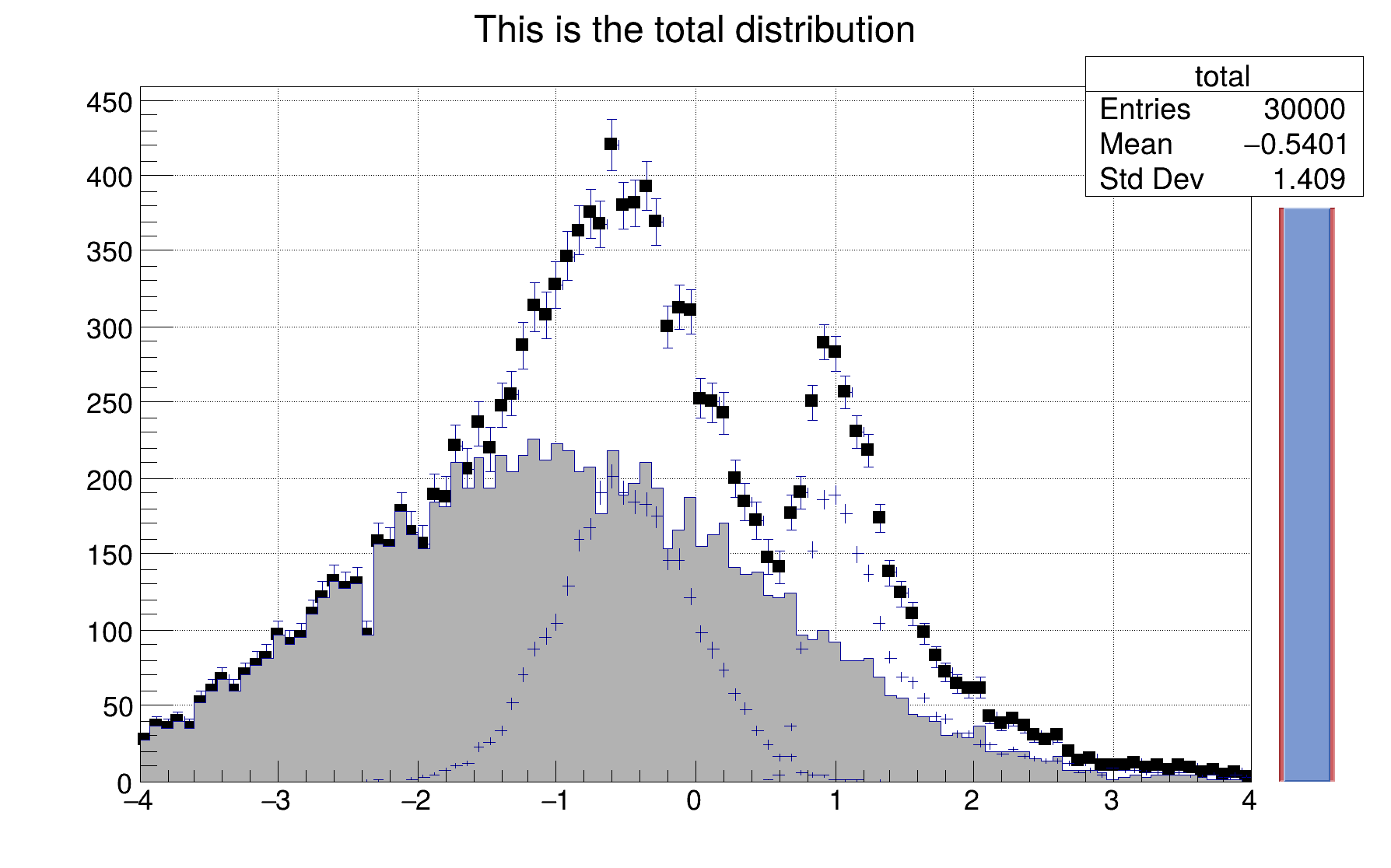

Simple example illustrating how to use the C++ interpreter.
from ROOT import TCanvas, TH1F, TSlider
from ROOT import gROOT, gBenchmark, gRandom
c1 =
TCanvas(
'c1',
'The HSUM example', 200, 10, 600, 400 )
total =
TH1F(
'total',
'This is the total distribution', 100, -4, 4 )
main =
TH1F(
'main',
'Main contributor', 100, -4, 4 )
s1 =
TH1F(
's1',
'This is the first signal', 100, -4, 4 )
s2 =
TH1F(
's2',
'This is the second signal', 100, -4, 4 )
histos = [ 'total', 'main', 's1', 's2' ]
for name in histos:
exec('%sFill = %s.Fill' % (name,name))
kUPDATE = 500
xmain = gauss( -1, 1.5 )
xs1 = gauss( -0.5, 0.5 )
xs2 = landau( 1, 0.15 )
if i and (i%kUPDATE) == 0 :
if i == kUPDATE :
if slider:
for name in histos:
exec('del %sFill' % name)
del histos
ROOT::Detail::TRangeCast< T, true > TRangeDynCast
TRangeDynCast is an adapter class that allows the typed iteration through a TCollection.
1-D histogram with a float per channel (see TH1 documentation)
A specialized TPad including a TSliderBox object.
- Author
- Wim Lavrijsen
Definition in file hist007_TH1_liveupdate.py.


